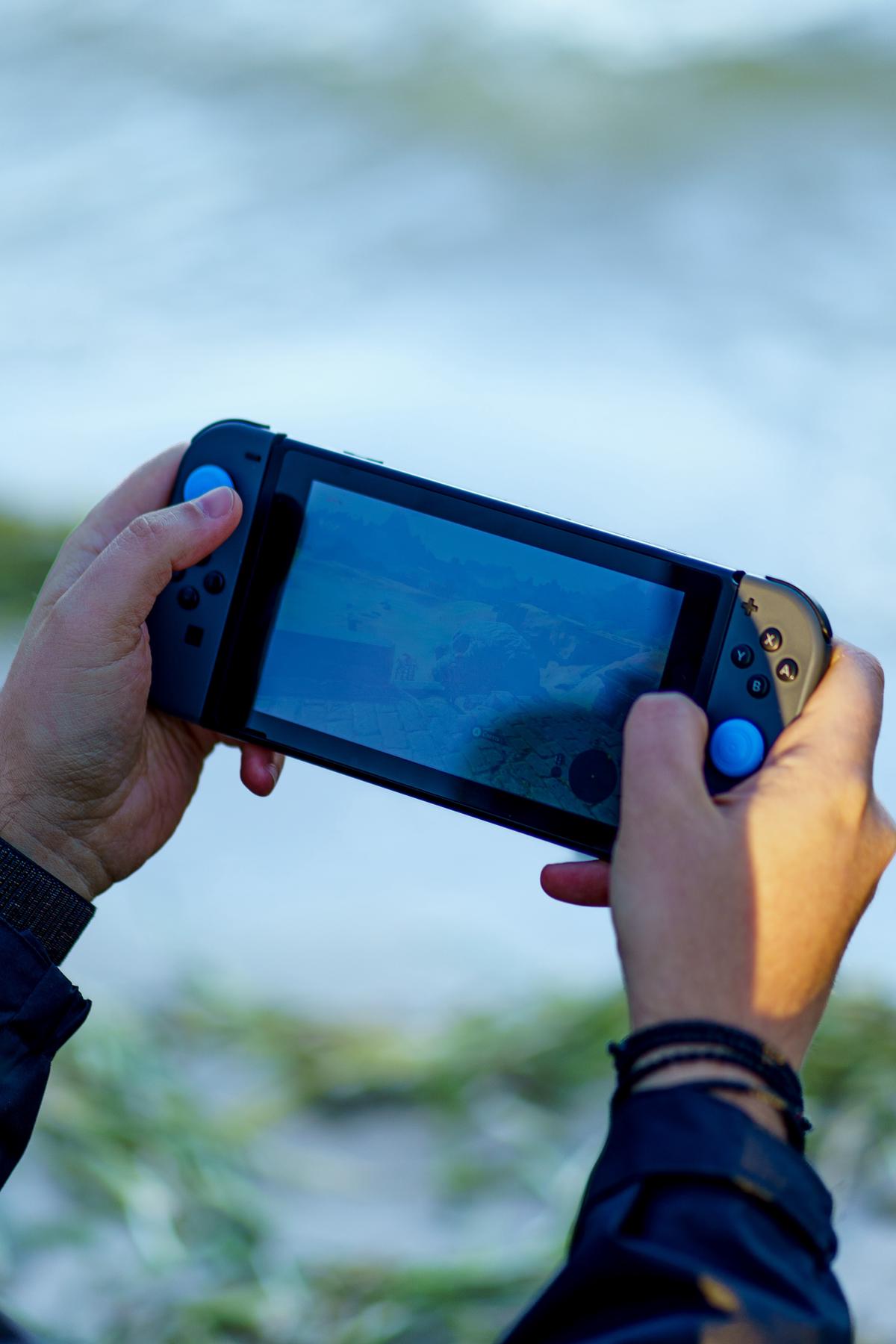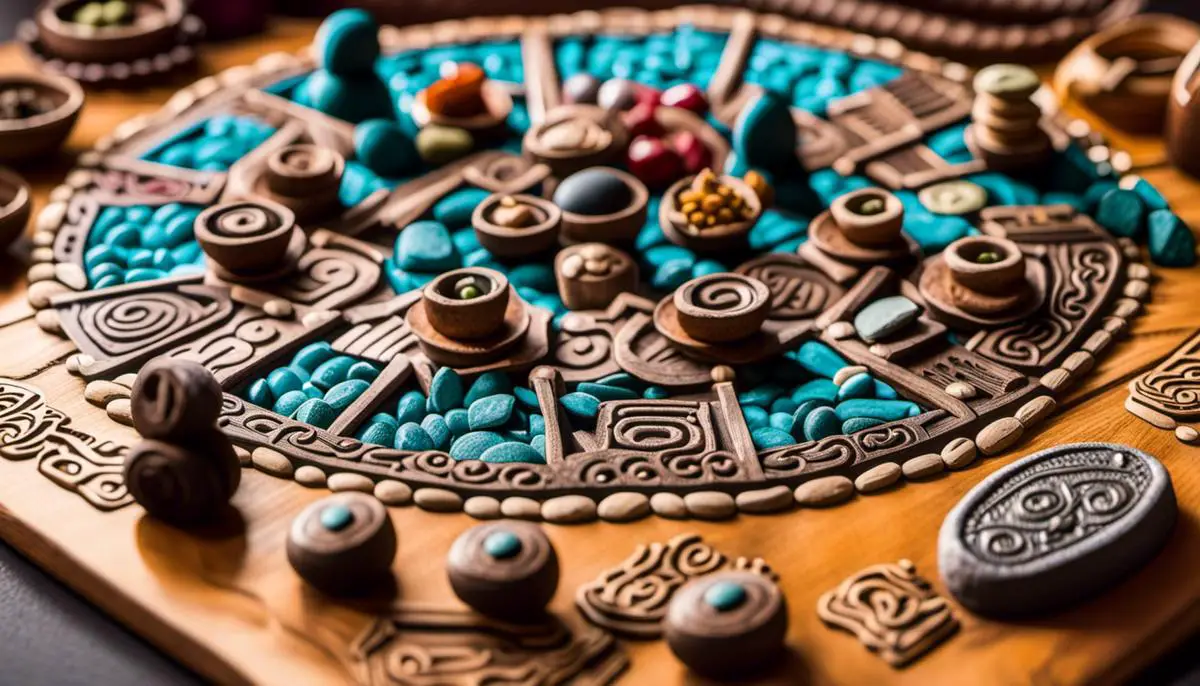In the rich tapestry of human history, few aspects are as captivating and enduring as games. As quintessential expressions of a community’s culture, practices, and values, games offer a distinctive window into the heart of a society. This sentiment holds true for the engrossing world of Aztec board games. The Aztecs, a vibrant civilization known for its advanced societal systems and architectural prowess, harbored a deep affection for various board games, which played a central role in several aspects of their life. These games were not limited to mere pastime activities; rather, they served as pedagogical tools, communication mediators, and vivid displays of Aztec folklore and mythology. In our journey to learn these ancient board games, we will delve into the enthralling culture of the Aztecs, explore the intricate rules of their cherished games, engage in the craft of creating traditional game boards and pieces, and apprehend the undeniable impact these games have had on our modern board gaming experiences.
Understanding the Aztec Culture
Aztec Civilization: A Snapshot of a Multifaceted Culture
The Aztec Civilization, originally hailing from northern Mexico, flourished during the 14th, 15th, and 16th centuries and was most famous for its vibrant religious rituals, sophisticated arithmetic system, and captivating artworks. The city of Tenochtitlan, the largest city in the pre-Columbian Americas, served as the center of the Aztec Empire. While they were a warrior society known for their bloody sacrificial ceremonies, the Aztecs were also a community of scholars, architects, artists, and gamers.
Board Games: An Important Aspect of Aztec Culture
Board games were a significant part of the Aztec culture. These were not limited to mere forms of entertainment or idle pastime; in fact, they went beyond the scope of fun and leisure. They were often used as a medium to pass down traditions, teach strategic thinking, enhance mathematical prowess, encourage teamwork, and facilitate bonding. They were also instrumental in maintaining and promoting cultural exchanges with other societies.
Role of Board Games in Teaching and Communication
The Aztecs utilized board games as teaching tools, particularly Patolli, a game that had a profound influence on Aztec children. Through Patolli, children were instructed about the virtues of responsibility and developed their strategic thinking to win. This game was based on a cross-shaped board, and its purpose was to educate children about the celestial cycle of planets, the significance of numbers, and the importance of making the right decision at the right time.
Patolli: The Game of Strategy and Mathematics
Patolli, the most popular of the Aztec board games, was a game of strategy that hinged heavily on mathematical calculations. Players had to move their pieces around the cross-shaped board, using beans as tokens. The game incorporated elements of risk-taking, mathematics, and strategy. The objective of the game was to be the first to move all of one’s pieces off the board. Factors such as the length of the game and the players’ actions were influenced by throws of the beans, introducing probability and reliance on luck.
Aztec Board Games: Catalysts for Cultural Exchange
Aztec board games also served as bridges for cultural exchanges. This was evident with the example of Patolli which origins can be traced back to the ancient Mesoamericas including Mayans, Mixtecs, and Toltecs. When the Spanish arrived, they were enamored with the game, leading them to take it back to Europe where it influenced the development of other board games.
Wrapping up, it’s worth noting that the Aztec Civilization was more than just the tales of warriors and bloodshed in sacrificial rituals. They were a sophisticated society with a well-developed culture that used board games as tools for imparting life skills and preserving their rich traditions. Be it Patolli, a game of strategy, or the elementary math embedded in the games, these were integral parts of the daily life in Aztec society. Today, these games serve as a lens to explore and understand the Aztec civilization, testifying to their innovative and energetic cultural heritage.

Rules and Gameplay of Aztec Board Games
Patolli: Diving into an Ancient Aztec Board Game
Patolli, a game enjoyed by the ancient Aztecs, was not just any game, but a race or gambling pastime deeply connected to their religious practices and rituals. The game board was presented in a cross-shaped pattern, featuring squares as distinctive markings. While the number of squares differed on each side, 52, representing the Aztec calendar’s 52-year cycle, was the typical count.
A player’s mission was to successfully guide six game pieces across the board before their opponent could. The shift of these pieces was primarily dictated by a toss of five beans, each side uniquely marked.
Every player was equipped with a set of six markers. The game’s initial phase involved each player positioning their markers at the starting point on the board. Taking turns, players would then cast the beans, and depending on the number of marked sides that appeared, a player could advance their marker a corresponding number of squares, more marked beans indicating a larger move.
The aim was to circumnavigate the rectangular pathway along the board, with an opportunity to knock an opponent’s marker off the board by landing on it. The first player to cross finish line with all their pieces won the game.
Tlachtli: Ancient Aztec Ball Game
Tlachtli, also known as Ullamaliztli, was another popular game in the ancient Aztec civilization, often considered a mix between a sport and a board game. Played on a T-shaped court, Tlachtli relied heavily on the use of rubber balls and had both recreational and religious significance.
The gameplay involved two teams, each trying to hit the rubber ball into the opponent’s end zone using only their hips, knees, or elbows. Striking the ball with the hands, feet, or head was not allowed. The game ended when a team scored a predefined number of points, or occasionally, when a player managed to pass the ball through one of the stone rings located on the side walls of the court, a difficult feat to accomplished but one that typically ended the game instantly.
The role of the rubber ball was significant, representing the sun, and often wagering was involved. So important was the connection with the religious beliefs that human sacrifices were occasionally associated with the game, particularly in a context of a grander religious festival or event.
Enthusiasts and hobbyists with a keen interest in ancient Aztec civilization often find themselves drawn to the world of Aztec board games. At first glance, games like Patolli and Tlachtli may appear to be a gamified reflection of everyday life or cosmic events. However, they were integral parts of the Aztec society, playing crucial roles in their social, economic, and religious practices. There’s much more to these games than meets the eye. Exploring the intricate rules and dynamics of these games, alongside their rich historical context, can be a rewarding experience for hobbyists and enthusiasts alike.

Photo by eugenechystiakov on Unsplash
Creating Aztec Game Boards and Pieces
The Enthralling World of Ancient Aztec Board Games: A Cultural Heritage Worth Reviving
The board games of the ancient Aztec civilization were more than simple entertainments. They were symbolic representations of the Aztecs’ myths, histories, and philosophies. The famous game Patolli serves as a prime example. This game wasn’t merely a source of amusement for the Aztecs. It held religious significance with the board designed like a ‘cross’, marked by beans or stones. Each spot on the board signified a different deity or a concept from Aztec mythology, making the game a unique blend of entertainment and cultural heritage.
Making Aztec Game Boards
To create an Aztec game board, you need basic materials that are likely within your reach: cardboard, marker pens, and rulers. Drawing a grid of squares, diamonds, or circles for Patolli on a cardboard base will be your primary step. If you fancy a more durable game board, wooden planks are optional, but ensure professional tools and safety precautions if you decide to go this route.
You can also experiment with different designs and materials or even resort to a virtual board using graphic design software.
Crafting Aztec Game Pieces
The materials for crafting your own game pieces can be as simple as beans, small stones, or handmade clay models, keeping adherence to the traditional symbolic aspects. Clay can be sculpted into miniature shapes denoting formidable Aztec warriors, sacred animals, or divine symbols, depending on its complexity and the gravity you want to attach to your game.
Remember that the traditional Patolli made use of six beans, marked with a single dot. The side that the bean landed on when tossed determined the player’s move. So, you can emulate this original form or modify it based on your understanding and creativity.
The Importance of Each Piece
Each decision you make while crafting your Aztec board game should tell a narrative. If you decide to attach a unique deity or symbol from the Aztec culture to each piece, do remember to research thoroughly its cultural significance. For instance, the bean, meant to serve as dice, had a ceremonial importance as it was used for prediction and decision making. Other symbols like the jaguar or the feathered serpent represented might and elegance, respectively.
It’s essential to appreciate that every piece had a coded significance, and per the Aztec belief, a game was not just a game but a real-world scenario that was being enacted.
Images, diagrams, or sketched illustrations can help you construct the game pieces aesthetically and symbolically accurate. You can find various resources online for reference, which not only guide you to the historic truth of the game but also give you a broad spectrum of how innovative you can be in recrafting a game that had such a profound cultural and spiritual impact in its time.
Rediscovering and Personalizing Aztec Board Games
Embarking on the journey to discover and create Aztec board games comes with the freedom to revert to the traditional rules or modify them to suit your personal preferences. This presents a unique opportunity to unearth and reinterpret these ancient cultural narratives in your own distinct style, ensuring the revival of a long-forgotten part of history.

Connecting Modern Board Games to Ancient Aztec Games
Diving Deep into Ancient Aztec Games
The Aztec culture was richly fascinated by games that required strategic planning and gambled on the whim of fate. Such games played an integral role in their society, as they reflected the strong influence of religious, warfare, and societal norms. One game, in particular, was Patolli, a racing board game where the goal was to navigate across a cross-shaped board before your component. It demanded shrewd observations, calculated decisions, and a slice of good fortune. This game required players to bet valuable objects, an adrenaline-inducing facet, making it more than just a pastime. Interestingly, many of these elements echo the essentials found in today’s modern board games.
The influence of Patolli
Patolli holds striking resemblances to modern-day board games like backgammon and Parcheesi. These games also involve moving pieces across a board according to the outcome of throws, a central mechanic inherited from Patolli. Not just in terms of game mechanics, these games also embody the combination of skill and luck, strategic planning, and even elements of bluffing that were prominent features of Patolli.
Ullamaliztli – a Different Type of Game
Apart from board-based games like Patolli, the Aztec also indulged in physical games like Ullamaliztli, a ballgame where players had to hit a small rubber ball with their hips to pass it through stone rings. Seemingly distanced from modern board games, Ullamaliztli’s influence can still be traced back in terms of ‘physical positioning’ and ‘angle prediction,’ two essential strategies in numerous current war and sports-themed board games.
Application of Aztec Strategies in Contemporary Games
The strategic aspect of the Aztec games has heavily influenced modern board game rules. In key strategic games like Chess and Checkers, a player’s predictive abilities and tactical prowess echo the mental acuity that ancient Aztec games like Patolli required. In modern games like Risk or Settlers of Catan, we can witness the presence of resource management and territorial control, elements Aztec players would be familiar with. Moreover, the rising popularity of bluffing and betting as game mechanics in contemporary play can also be traced back to the integral risk-reward system representative of Aztec gameplay.
Ancient Aztec Symbolism in Modern Day Game Designs
Ancient Aztec board games were rich with cultural and religious symbolism. This elaborate display of themes and narratives through gameplay is mirrored today in games like the Aztec-themed “Tzolk’in”: The Mayan Calendar or in games like “Teotihuacan: City of Gods” that recreate important elements of Mesoamerican culture. Although the thematic implementation between the actual Aztec games and these modern ones might differ, their shared focus on cultural representation indeed establishes a clear continuity.
In a broader view, modern board games owe their sense of competitiveness, strategy, and ingenious design to not just the games in ancient Aztec society, but also to how they were intricately woven into the fabric of their culture, religion, and daily life. This ongoing inheritance continues to shape and refine the landscape of modern board gaming.
src=”short-name-of-a.jpg-image-that-would-go-with-the-text-with-dashes-instead-of-spaces” alt=”description-of-an-image-that-would-go-with-the-text,-describing-it-for-someone-that-is-visually-impared”/>

Immersing oneself in the world of Aztec board games is an enriching exploration of cultural heritage, strategic thought, and craft. As we have ventured through the vibrant Aztec culture, discerned the exciting and engaging rules of their board games, and discovered the art of creating traditional Aztec game boards and pieces, it can be acknowledged that these activities extend far beyond recreation. By understanding and appreciating the connections between modern board games and ancient Aztec games, we foster a deeper appreciation for the incredible legacy of game design and the profound ways it permeates societies, cultures, and eras. Looking to the future, we can optimistically anticipate the evolution of board gaming as it continues to be influenced by the diverse cultures and histories of the world, just like the Aztecs have so eloquently done.
